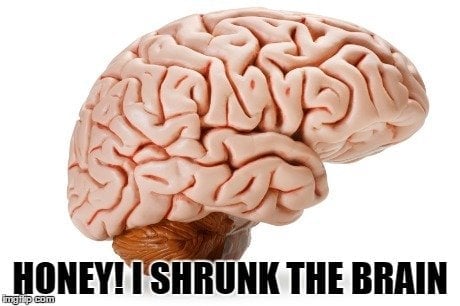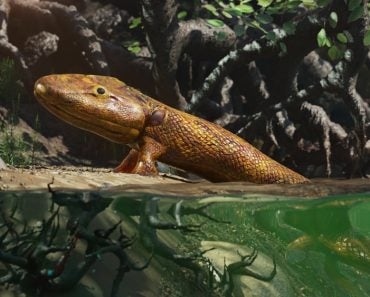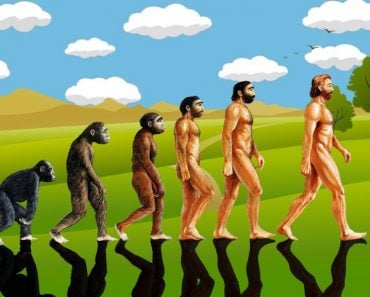As fun as it may seem, hanging upside down from a tree with your tail isn’t one of the luxuries we have as human beings. When Charles Darwin introduced the world to the concept of evolution, he had proof and evidence to support his hypothesis. Most of these revolved around one simple phenomenon – natural selection.
This meant that a species undergoes continuous changes that are manifested over generations and the main driving force that brought about these changes was the organism’s instinct to survive (also known as “survival of the fittest”). Nature automatically selects the useful traits and gets rid of those that are less important or necessary.
Some of these vestigial traits are still visible in modern humans and answer many of the questions that we have related to human anatomy and our past.
Recommended Video for you:
1.The Wisdom Teeth
Our ancestor’s diet comprised of many raw plants, which had to be eaten faster than we do today. This was because they had to ingest a lot of this material in a single day to compensate for the lack of nutrient variety. The extra set of molars, i.e., the Wisdom Teeth, helped in this faster chewing process and made eating more efficient.

As evolution made its selection, however, our anatomy changed, our diets grew appropriately smaller, and our need to process food faster was reduced. Some people don’t even develop Wisdom Teeth, further proving their uselessness.
2. Goosebumps

Creatures got goosebumps when they are cold, frightened or surprised. The most accepted theory says that we once needed goosebumps to make our bodies look bigger, in response to fear. This makes sense when we had a long thick coat of hair on our bodies. We are still left with the mechanism to control goosebumps, but are left without a reason to. They are simply left over from our past when we were not clothed and needed to scare away our natural enemies.
3. Brain Shrinking In Size

Our brains have actually been shrinking over the last 30,000 years. The average brain size has decreased by about 10% by volume. This is especially disconcerting, as our big brains are what make us smarter than the rest of the animal world. We might actually be getting dumber. I, for one, always thought that eating bananas while hanging off of a tree is significantly dumber than whatever stupid things that humans are capable of, but that might not be true in the near future.
The reason why the brain is shrinking is thought to be the direct result of the safety net of modern society, which reduces our need to become more intelligent and independent. Another theory suggests that shrinking brains might actually be a good thing. It means that our brain is rewiring to work faster and take up less room. There’s also a theory that smaller brains are an evolutionary advantage, because they make us less aggressive than other primates.
4.The Palmar Grasp Reflex

Have you ever had an infant grab your finger with his teeny tiny hand? This is more of a vestigial behavior than a vestigial feature. Most infants can grasp your finger or a similar object with surprising power. They do it so powerfully that an equivalent amount of force could be used to support their own body weight. This is a reflex and can be induced by stroking the back of the baby’s hand. This typically lasts until the age of four or five months, which is exactly the amount of time we would have had to cling to our mothers while they were traveling.
5. Ear Muscle

The Auriculares muscles are used by creatures to control their external ears without actual moving the head. This helped in focusing their hearing onto certain sounds. As primates, we had the ability to swivel our pinnas (external ear) to augment our peripheral hearing, like a cat, albeit not to the same extent. All we can do now is make them wiggle, unless you are Mr. Bean, who is probably closer to a chimp than a human on the evolutionary scale anyway.
6. Plantaris Muscle

We used these muscles to grip objects using just our feet, which came in ‘handy’ when we were busy eating a banana with one hand and hanging onto a branch with another. Humans still have this muscle, but it is about as useful as Justin Bieber. Doctors actually take tissue from this muscle for reconstruction surgery in other parts of the body, so we at least get some use out of these features, which is more than we can say about Bieber Fever.
7. Third Eyelid

Ever seen a cat blink up close? They have a third membrane, the Plica semilunaris, in addition to the two normal ones we have. Having three eyelids is pretty rare in mammals, but we have a structurally similar vestigial membrane. It is quite small and therefore redundant. It is typically translucent, and moistens the eye to clear debris. We have no use of such membranes, because we developed an environment that didn’t need another visual challenge. However, due to increasing pollution, one might feel that we could have been better equipped to handle SPMs and dust if we hadn’t lost this anatomical feature.
8. Coccyx

This one is better known as the tailbone and is present at the very “tail” end of the human vertebrae. We know that this is the remnant of a lost tail. Between some stages of human embryo genesis, one can actually observe a tail-like structure that is later absorbed. That fact is seriously freaky. Just imagine… if we could set up a monitor to show us the stages of embryo formation, we can actually see evolution in motion. Some scientists believe that embryogenesis is a microcosmic parallel to evolution. The coccyx is not fully useless at this point, as we do use it as a support structure while sitting.
9. The Appendix

The most famous example of a vestigial organ is the Appendix, which is so useless that it often has to be removed from the body if it becomes infected. Once upon a time, it might have been useful in processing the cellulose from our green diet. As our preference of veggies declined, however, the appendix became less important. What’s more interesting is the fact that natural selection prefers large organs, as they are less likely to get infected. This means that the appendix is probably going to be a part of our anatomy longer than our little toe, which is just about as useless. The latest theory regarding the appendix is that it’s believed to be a repository for beneficial bacteria.
If nature was your girlfriend’s dad, then your video games would be the ‘less important trait’. If you have one iota of survival instinct, you WILL have to say goodbye to Mario Kart.












